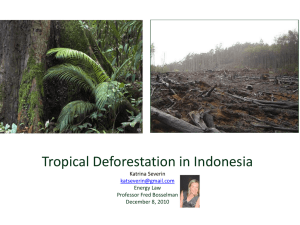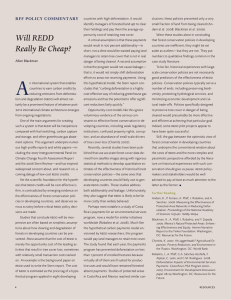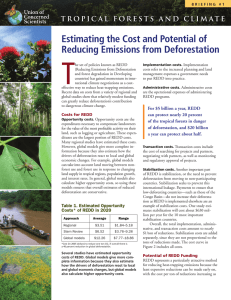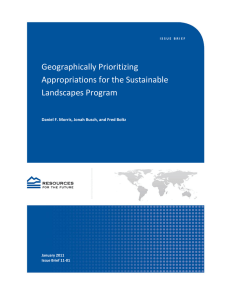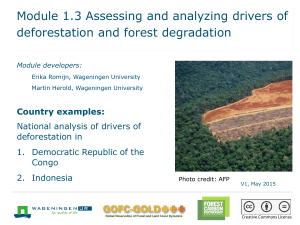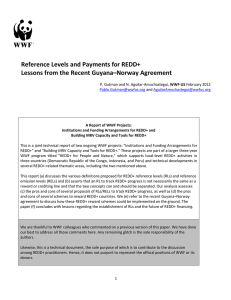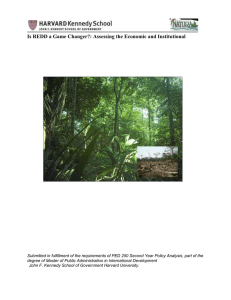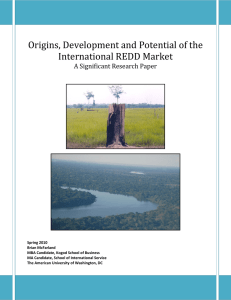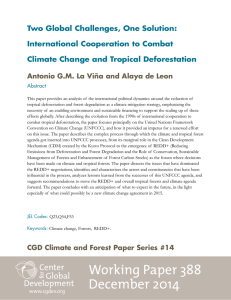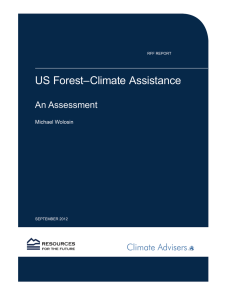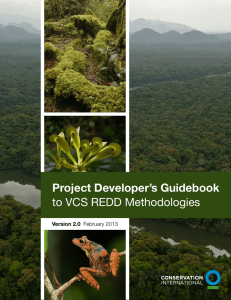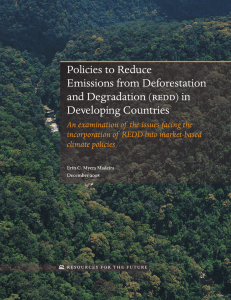ppt - REDD
advertisement
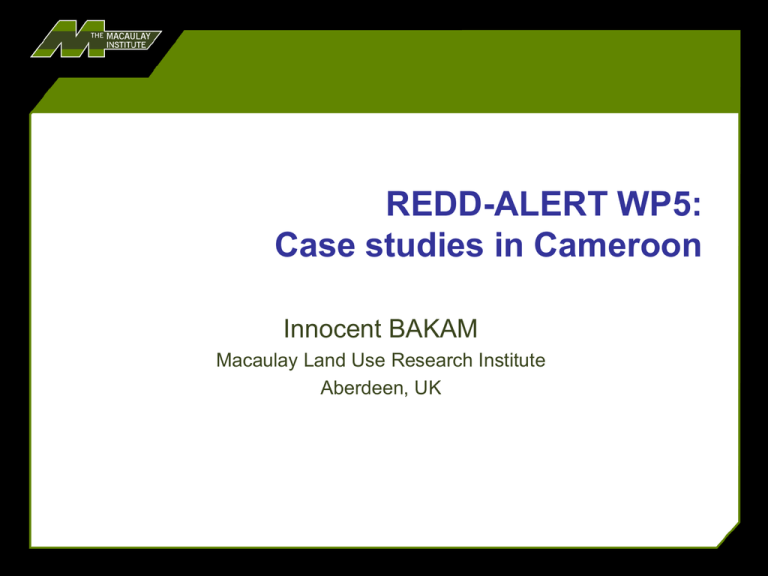
REDD-ALERT WP5: Case studies in Cameroon Innocent BAKAM Macaulay Land Use Research Institute Aberdeen, UK Criteria for site selection • Image availability: the villages should be included in the area identified within WP1, where satellite images are available and cloud free, such that an historical analysis of deforestation is possible. • Range of drivers: the villages should allow coverage of the range of deforestation drivers in southern Cameroon: agriculture, logging, market, infrastructures… • Data availability: As far as possible, we should try to work in villages where it is possible to benefit from data from past or on-going projects, such as STCP Image availability Image availability Image availability Image availability Gradient of deforestation Range of drivers Logging in Somalomo near the Dja Reserve Agriculture for subsistence in Ekeke Agriculture for Gabon and Equatorial Guinea markets in Meyo-Centre The REDD-Camer model • • Purpose: to study the implications of REDD policies at the local level Agents: – Land patches (to represent land uses) – Households (to make decisions on land use) – Local/national institutions (to implement REDD policies) • • Scenarios to be tested: REDD policies at local level Output: the 3Es – effectiveness: emission avoided – efficiency: relative cost – equity: how benefits are shared Social/institutional factors Population Land tenure Social structure Economic factors Carbon prices Opportunity costs Agricultural practices Coupled Human-Environment system households REDD effectiveness Avoided deforestation Balance of land uses Balance of ecosystem services Social equity System resilience Land patches The REDD-Camer model • Agent-based model with PALM • Following ASB-CamFlores model + development of household decision making processes • Land patches – each land patch represents a field which supports a crop system described by a specified transition (mixed food-fallow system, forest melon fields, cocoa plantations) – transitions follow basic rules of local farming systems, – the actual timing of land use change is determined by households’ decisions. – the forest area surrounding the village is represented by a special land patch where farmers may convert portions to crop patches (deforestation process), and which can also be extended with abandoned old fallow patches (fallow to forest conversion). The REDD-Camer model • Households make decision about: – – – • selection of forest patch for conversion into agriculture area associated to each land use priorities for labour allocation to different tasks. Decisions are influenced by a combination of factors: – household basic needs (subsistence, cash requirement for education, health, recreation) – labour availability (household composition, possibility to hire or exchange labour) – crop productivity (soil fertility, fallow age, forest, previous crop) – land availability (land tenure/access/usage rights, security of land tenureship) – spatial configuration (distance to farms, proximity with other farms, with other households’ farms) – access to market (possibility of selling farm products, availability of food on the market) – social norms (usual agricultural practices, peer pressure, attitude towards innovation) The REDD-Camer model • • A household will be characterised by its composition (men, women, children), its land ownership and usage rights, and the level of importance it associates to each of these factors, building on the study of personal preferences of farmers in land use decisions from Brown (2006). Local/national authority may adopt a set of policies in order to influence farmers decisions and deliver the required level of avoided deforestation. INTERNATIONAL RAC: reference level crediting Certification National level compensation NATIONAL Incentives: subsidies, tax credits Integrating climate policies in broader development policies Resettlement incentives LOCAL Funding fire prevention programs Provide alternative livelihood opportunities Use of idle land Funded projects CAT: cap and trade Projects level crediting Taxes Land rehabilitation - incentives for local government PES (not only carbon) Information instruments (awareness campaigns) Implementing strategic planning of road improvements Paying communities for reduced deforestation or natural regeneration Best practice PAM: Compensation for policies and measures Set up protected areas Land tenure reform – establishing and enforcing clear property rights Stop illegal logging Tradable permits Suspend permits for palm oil, plantations or peatland Voluntary agreements – mainly between government and industry Promoting offfarm employment Enhancement of conservation activities inside/outside protected areas Promote sustainable forest management practices Forest fire hotspot detection Non deforestation law Agricultural intensification – alternatives for subsistence agriculture – reduce pressure on forests Establishment of new markets Capacity building Local groups lease tracts of forest from the government, and sell C units according to the amount of deforestation avoided Community forest management Rehabilitation of degraded forests Development of market mechanisms and instruments – carbon offset markets Farm forestry The REDD-Camer model • Scenarios to be evaluated will include – the current situation as a baseline (static, in absence of REDD) – population increase leading to agricultural intensification and changes in different land tenure types (dynamic, in absence of REDD) – REDD funding being used to accelerate intensification (e.g. fertiliser subsidies) – introduction of community forestry schemes, e.g. perhaps where REDD benefits are allocated by a village representative (who can allocate as little or as much as he wants, but must deliver avoided deforestation or not receive money) – differing carbon prices and opportunity costs. Also how uncertainty in this prices may affect decision-making regarding land use options. – other policy instruments arising from WP4 (Task 5.7) The REDD-Camer model • Criteria for evaluation of each scenario in comparison to the baselines will include the way that REDD mechanisms may affect – rates of (avoided) deforestation and associated GHG emissions (effectiveness) – the balance of land-uses and hence balance of ecosystem services – the relative cost per unit of emission avoided (efficiency) – distribution of wealth, social equity (fairness, equity) – the resilience or sustainability of the system (i.e. what happens if REDD disappears). Forest Melon Field D. Brown http://aem.cornell.edu/special_programs/afsnrm/brown/photos/ForestMelonFieldCameroon.jpg Mixed food crop field D Brown http://aem.cornell.edu/special_programs/afsnrm/brown/photos/MixedFoodCropFieldCameroon.jpg Primary forest Mongabay http://www.mongabay.com/images/brazil/deep_primary_forest_02.gif Land-use transition (Brown 2006) Land-use transition in Akok (Robiglio 2008) Data requirements for REDD-Camer model Draft questionnaire






